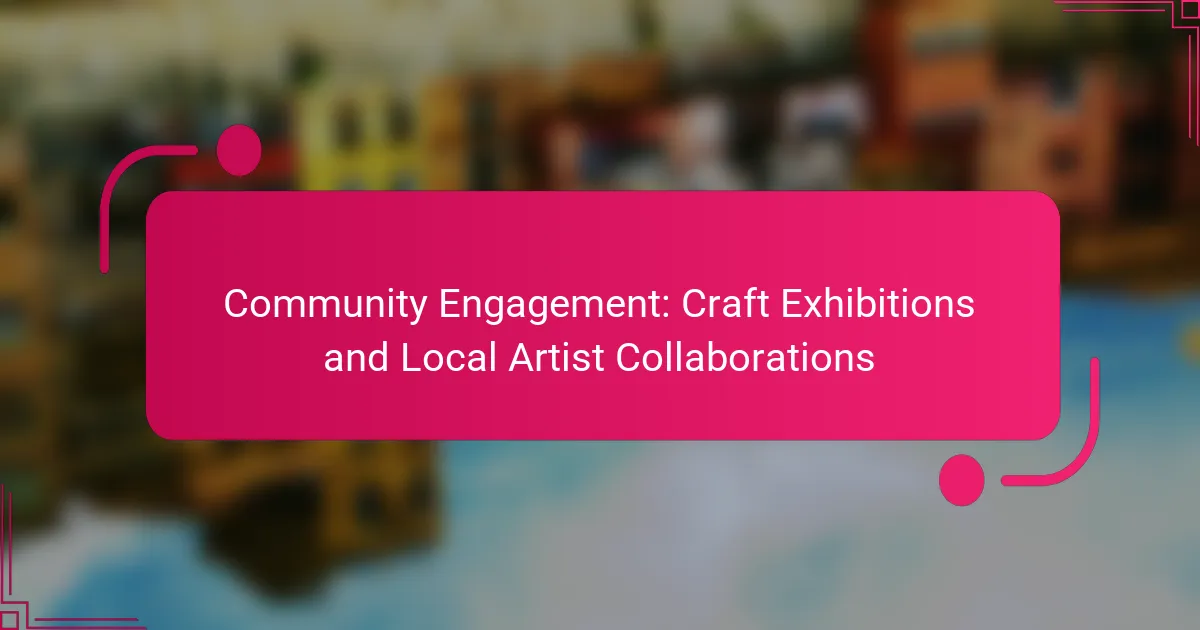Community engagement enhances craft exhibitions by fostering collaboration between local artists and the community. This article explores the benefits of local artist partnerships, the role of technology in enhancing engagement, and the importance of attendee feedback in shaping future events. Additionally, it addresses challenges organizers face in promoting participation and highlights the unique attributes that make collaborations successful.
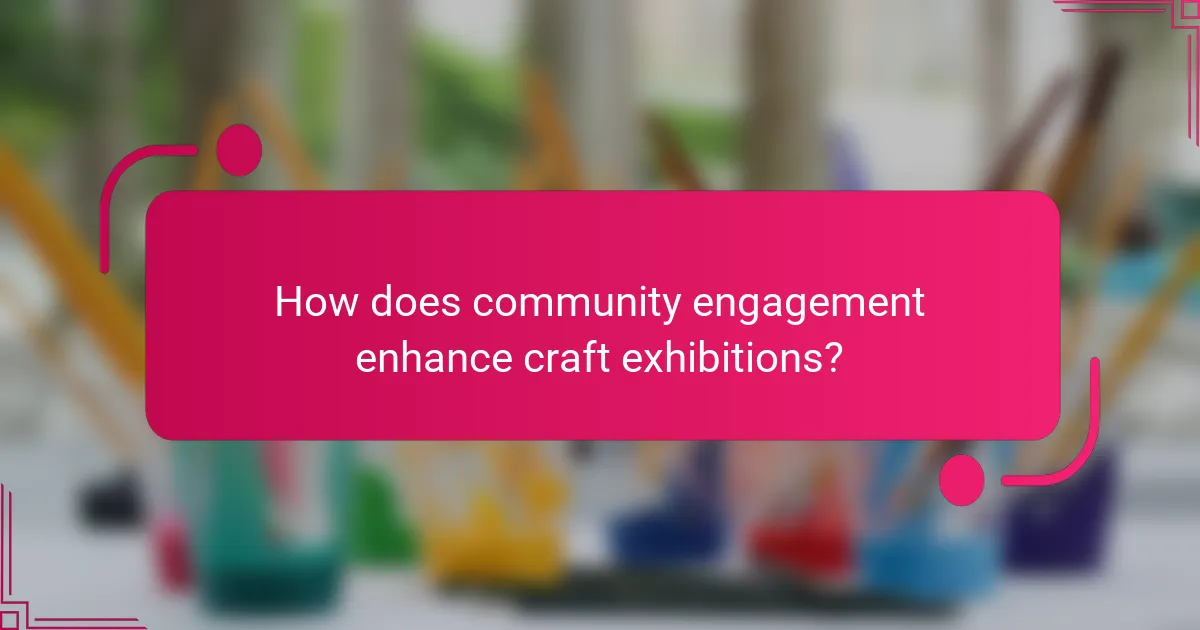
How does community engagement enhance craft exhibitions?
Community engagement significantly enhances craft exhibitions by fostering collaboration between local artists and the community. This interaction creates a vibrant atmosphere that promotes cultural exchange and supports local economies. Engaging the community allows artists to showcase their work, receive feedback, and build a loyal audience. As a result, craft exhibitions become more inclusive, reflecting diverse perspectives and talents. Collaborative projects often lead to unique creations that highlight the community’s identity, making exhibitions more meaningful and memorable.
What are the benefits of local artist collaborations for communities?
Local artist collaborations benefit communities by fostering creativity, enhancing cultural identity, and promoting economic development. These partnerships create opportunities for local artists to showcase their work, engage residents, and attract visitors. As a result, communities experience increased social cohesion and a vibrant arts scene. Collaborative projects often lead to unique events, such as craft exhibitions, that highlight local talent and encourage community participation. This engagement strengthens the local economy by drawing in tourists and supporting local businesses.
Which methods effectively promote community participation in craft events?
Engaging the community in craft events requires a mix of effective strategies. Collaborative projects with local artists foster ownership and excitement. Workshops encourage hands-on participation, enhancing skills and connections. Social media campaigns amplify outreach, attracting diverse audiences. Feedback loops allow community input, ensuring events meet local interests.
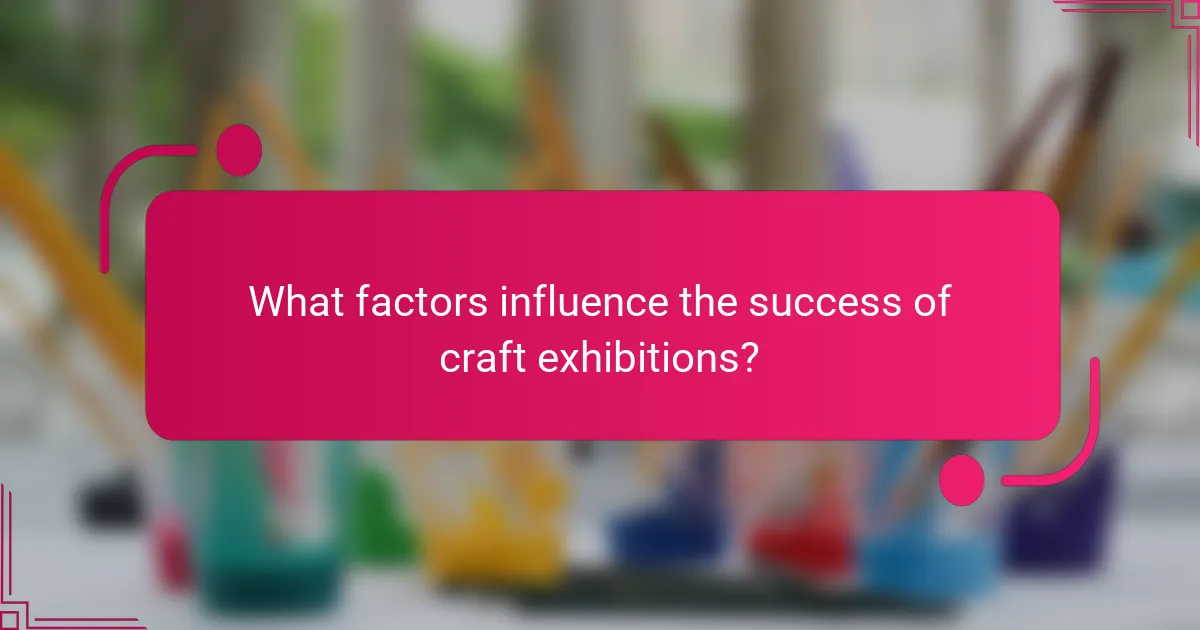
What factors influence the success of craft exhibitions?
Community engagement significantly influences the success of craft exhibitions through local artist collaborations. Strong partnerships with local artists enhance visibility and attract diverse audiences. Events that involve community participation create a sense of ownership, fostering loyalty and repeat attendance. Moreover, engaging local businesses can provide additional resources and sponsorship, further amplifying the exhibition’s reach. Collaborative workshops or demonstrations by artists can also enrich the visitor experience, making the event more interactive and memorable.
How do venue choices affect audience engagement?
Venue choices significantly influence audience engagement by shaping the overall experience and accessibility of craft exhibitions and local artist collaborations. A well-selected venue can enhance interaction, foster community connections, and create an inviting atmosphere. For instance, venues that are easily accessible and located within the community often attract larger audiences. Additionally, the ambiance and layout of a venue can encourage participation in activities, workshops, and discussions, leading to deeper engagement. Unique venues, such as local galleries or community centres, may offer a distinctive charm that resonates with attendees, enhancing their connection to the artists and the craft on display.
What role does marketing play in attracting visitors to craft exhibitions?
Marketing plays a crucial role in attracting visitors to craft exhibitions by fostering community engagement and highlighting local artist collaborations. Effective marketing strategies create awareness and generate excitement around events. Social media campaigns, local partnerships, and targeted advertisements can reach diverse audiences, increasing foot traffic. Engaging storytelling about featured artists and their work can draw interest and enhance connections with the community. Additionally, promotional events or workshops leading up to the exhibition can build anticipation and encourage participation, ultimately enriching the cultural landscape.
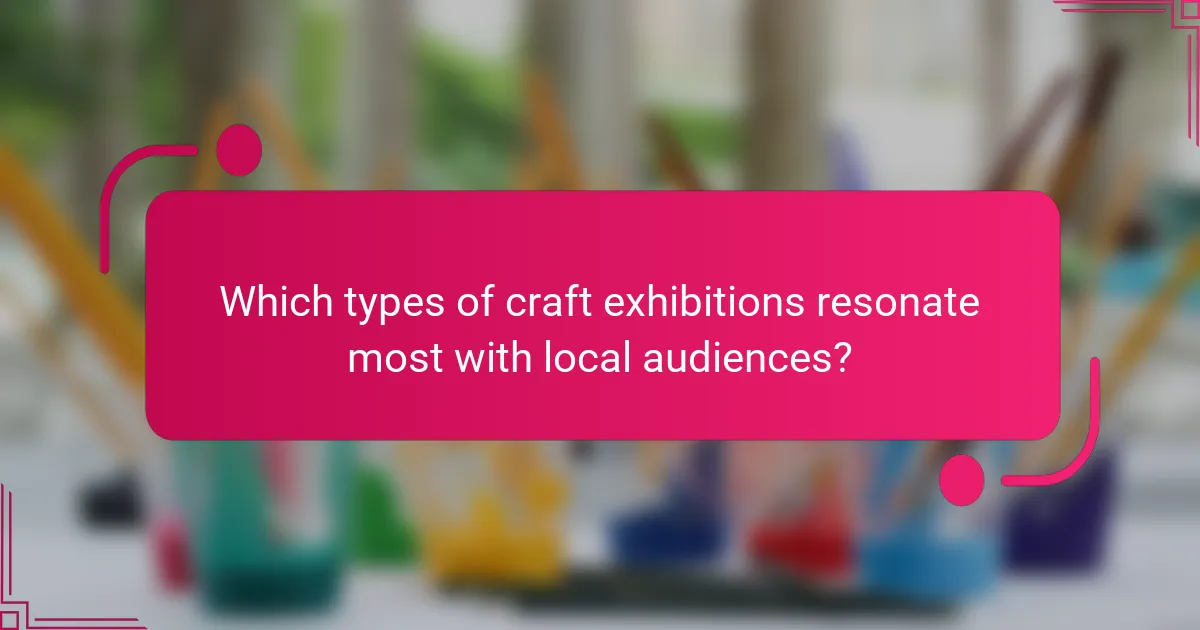
Which types of craft exhibitions resonate most with local audiences?
Local audiences resonate most with craft exhibitions that showcase community themes, interactive experiences, and collaborations with local artists. These exhibitions foster a sense of belonging and highlight regional culture. Engaging workshops and live demonstrations enhance visitor participation, making them more memorable. Exhibitions featuring sustainable practices also attract attention, as they align with growing environmental awareness.
How do cultural themes shape craft exhibition formats?
Cultural themes significantly influence craft exhibition formats by enhancing community engagement and artist collaborations. Exhibitions often reflect local traditions, fostering connections between artists and their communities. This approach allows for unique attributes, such as interactive installations or workshops, that resonate with cultural narratives. Additionally, exhibitions incorporating local stories can attract diverse audiences, promoting inclusivity and participation. As a result, craft exhibitions become dynamic spaces for cultural expression and community building.
What innovative practices are emerging in local artist collaborations?
Innovative practices in local artist collaborations include community-driven projects, interactive workshops, and digital showcases. These approaches foster connections between artists and audiences, enhancing engagement and creativity. Collaborative murals and public installations exemplify unique attributes that elevate community pride. As a result, local art scenes thrive through shared experiences and diverse artistic expressions.
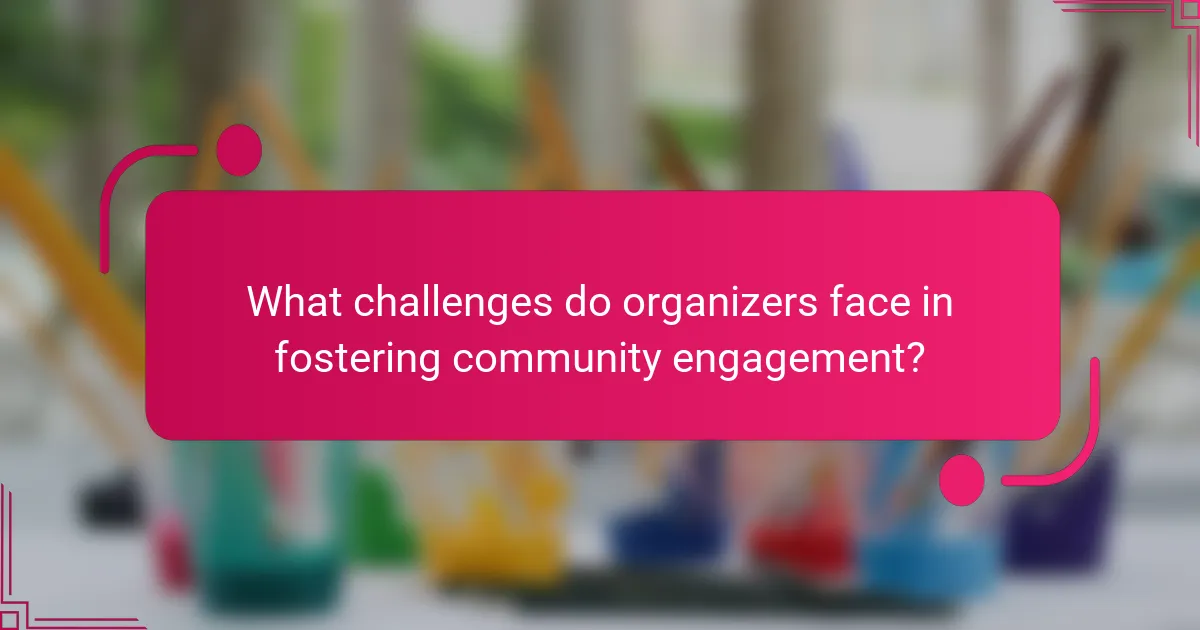
What challenges do organizers face in fostering community engagement?
Organizers face several challenges in fostering community engagement during craft exhibitions and local artist collaborations. Limited resources often hinder outreach efforts, making it difficult to attract diverse participants. Additionally, varying levels of interest and commitment among community members can lead to inconsistent engagement. Cultural differences may also pose barriers, as organizers must navigate diverse perspectives and preferences. Finally, measuring the impact of engagement initiatives remains complex, complicating the evaluation of success and areas for improvement.
How can funding limitations impact craft exhibitions?
Funding limitations can significantly hinder craft exhibitions by reducing the number of showcased local artists. Limited budgets restrict venue options and marketing efforts, affecting community engagement. As a result, fewer collaborations occur, diminishing the diversity and vibrancy of the exhibition. This impacts not only artist visibility but also local cultural enrichment.
What strategies help overcome barriers to participation?
Engaging the community in craft exhibitions and artist collaborations requires targeted strategies to overcome participation barriers. Fostering inclusive environments encourages diverse involvement.
1. Build partnerships with local organizations to enhance outreach.
2. Offer workshops to familiarize potential participants with craft techniques.
3. Provide flexible scheduling to accommodate various availability.
4. Use social media to create awareness and attract interest.
5. Ensure accessibility in venues to welcome all community members.
6. Gather feedback to continuously improve engagement efforts.
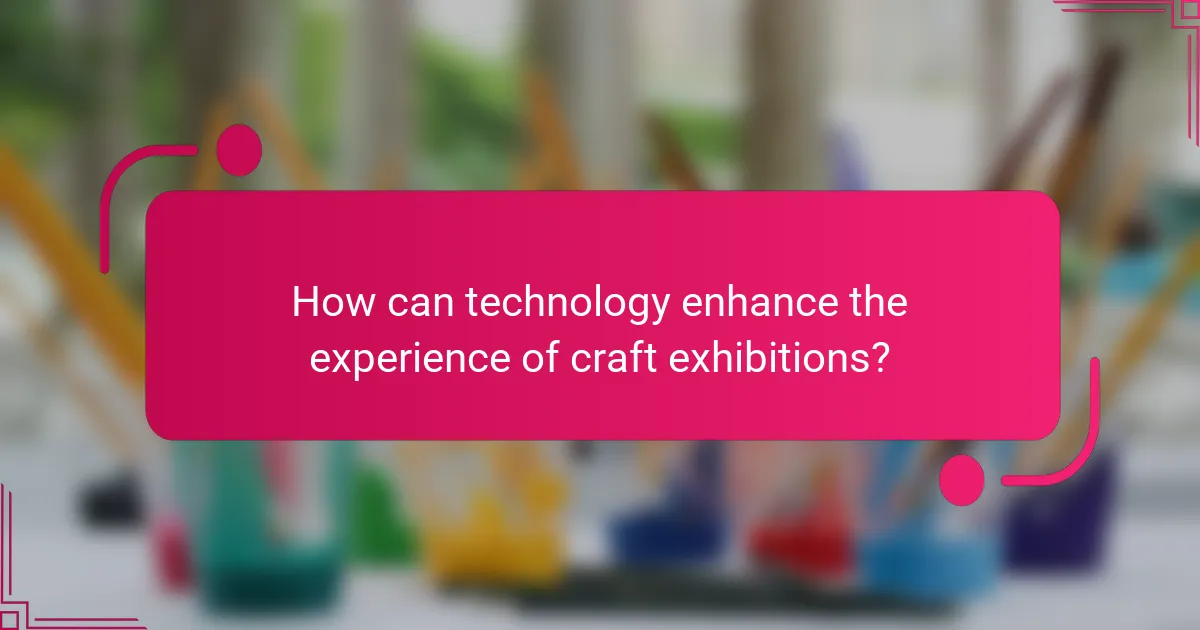
How can technology enhance the experience of craft exhibitions?
Technology can significantly enhance craft exhibitions by fostering community engagement and local artist collaborations. Interactive displays and virtual reality experiences allow visitors to immerse themselves in the creative process. Online platforms enable artists to showcase their work to a broader audience, facilitating connections with local communities. Social media integration encourages real-time feedback and interaction, strengthening ties between artists and attendees. Additionally, data analytics can help organizers tailor exhibitions to community interests, ensuring a more relevant and engaging experience.
What digital tools facilitate artist-community interactions?
Digital tools that facilitate artist-community interactions include social media platforms, online marketplaces, and community management software. These tools enhance collaboration, promote local exhibitions, and foster direct communication between artists and their communities. For example, platforms like Instagram allow artists to showcase their work and engage with local audiences effectively. Additionally, tools like Meetup can organize community events, strengthening artist connections and local engagement.
How do virtual exhibitions compare to in-person events?
Virtual exhibitions offer unique advantages over in-person events, particularly in community engagement. They provide broader accessibility, allowing participation from diverse audiences unable to attend physical events.
In-person events foster personal connections and immediate feedback, enhancing collaboration between local artists and the community. They create an immersive experience that can deepen engagement.
Virtual platforms facilitate innovative interactions, such as live streaming and online workshops, which can reach a global audience. This expands the visibility of local artists beyond geographical limitations.
Ultimately, both formats have distinct strengths. Balancing virtual and in-person elements can maximize community engagement in craft exhibitions.
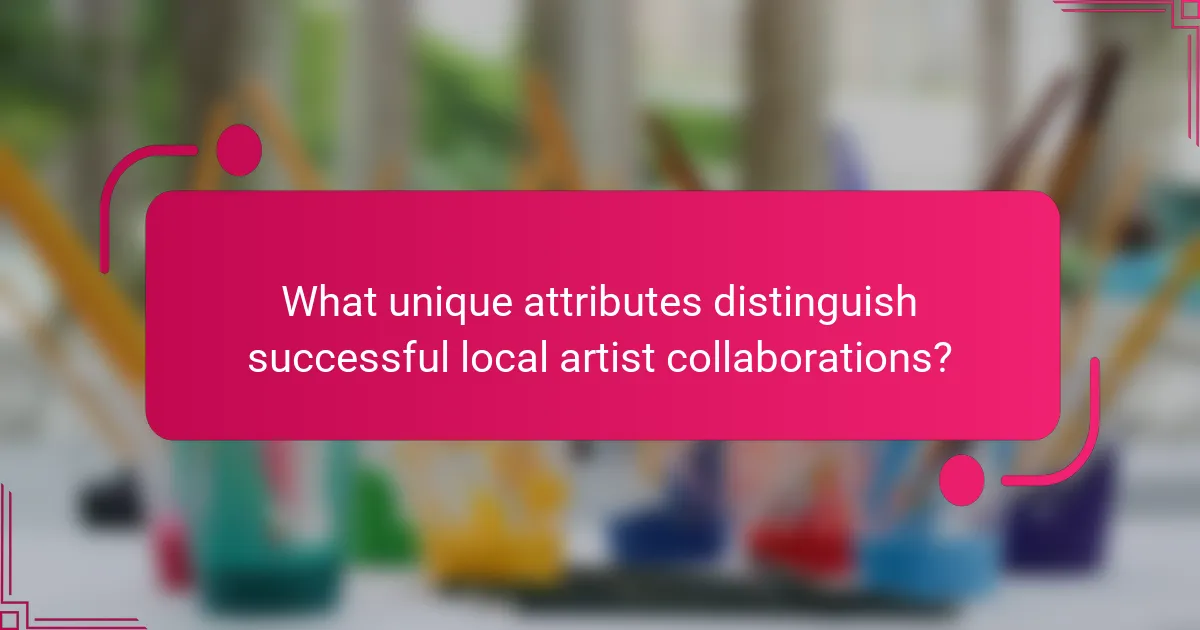
What unique attributes distinguish successful local artist collaborations?
Successful local artist collaborations are distinguished by their ability to foster community connections and enhance cultural relevance. Unique attributes include shared vision, mutual support, and diverse skill sets. Collaborative projects often engage local audiences, creating a sense of ownership and pride. Additionally, artists may leverage local resources and networks, resulting in innovative and authentic expressions of community identity.
How do collaborative projects reflect local cultural identities?
Collaborative projects showcase local cultural identities through shared artistic expressions and community involvement. They foster connections among artists and residents, highlighting unique traditions and stories. These projects often incorporate local materials and techniques, reinforcing cultural heritage. Moreover, they provide platforms for underrepresented voices, enriching the community’s cultural landscape.
What rare opportunities arise from artist-community partnerships?
Artist-community partnerships create rare opportunities for unique cultural exchanges and innovative projects. These collaborations can lead to the revitalization of local spaces, increased visibility for artists, and enhanced community pride. For instance, joint craft exhibitions can showcase diverse artistic expressions, fostering a sense of belonging among residents. Additionally, these partnerships often result in educational programs that engage the community, promoting skills development and appreciation for the arts. Ultimately, such collaborations can transform community dynamics and stimulate local economies.
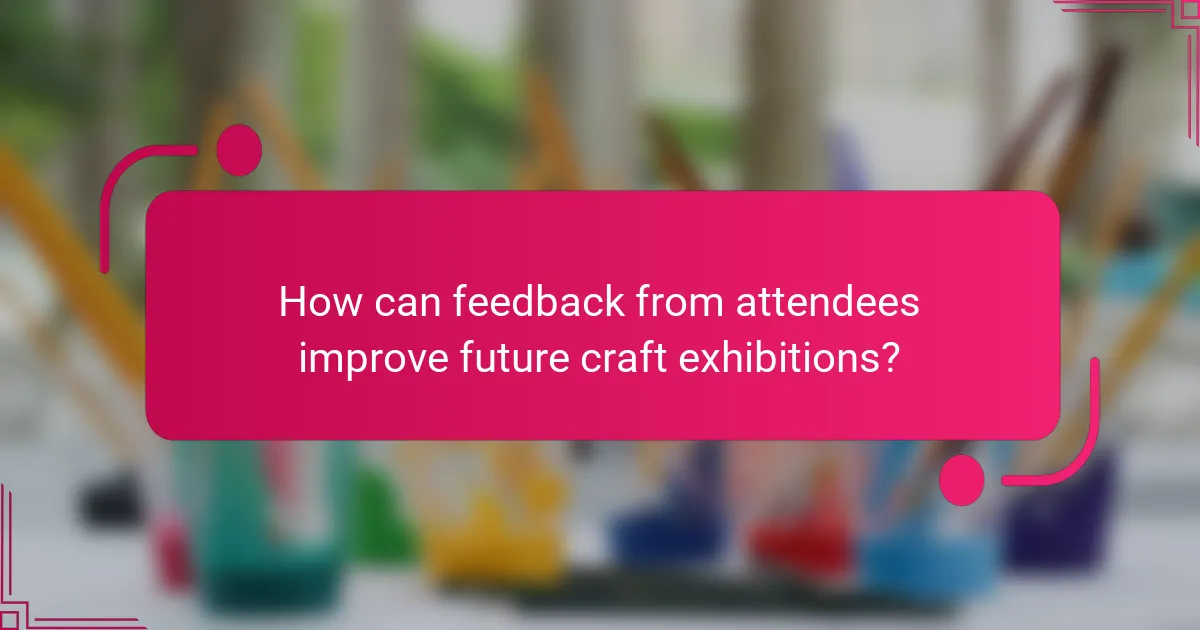
How can feedback from attendees improve future craft exhibitions?
Feedback from attendees significantly enhances future craft exhibitions by guiding improvements. Attendee insights reveal preferences, allowing organizers to tailor experiences. This fosters community engagement and strengthens local artist collaborations. Engaging with feedback also cultivates a sense of ownership among attendees, encouraging repeat participation. Ultimately, it leads to more vibrant and relevant exhibitions that reflect community interests.
What methods effectively gather and analyze visitor feedback?
To effectively gather and analyze visitor feedback, utilize surveys, comment cards, and digital platforms. Surveys can be distributed online or on-site to capture immediate impressions. Comment cards allow for quick written feedback during exhibitions. Digital platforms, such as social media and dedicated feedback apps, enable broader engagement and real-time analysis. Each method provides unique insights into visitor experiences, enhancing community engagement in craft exhibitions and local artist collaborations.
How can organizers implement changes based on community input?
Organizers can implement changes based on community input by actively soliciting feedback and incorporating it into their planning. Engaging local artists and community members fosters collaboration and ensures the exhibitions reflect diverse perspectives. Methods include surveys, focus groups, and public forums to gather insights. This approach enhances community ownership and satisfaction with the events.
What are best practices for sustaining ongoing community engagement in craft initiatives?
To sustain ongoing community engagement in craft initiatives, prioritize collaboration, inclusivity, and consistent communication. Foster partnerships with local artists and organizations to create diverse exhibitions that appeal to various audiences. Regularly solicit feedback to adapt initiatives and maintain relevance. Organize workshops and interactive events to encourage participation and deepen connections within the community.
